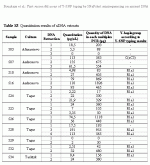I don't even know why haplogroup I2a is in discussion, ancient Scythian DNA show R1a1a for most part along with some C*, that's it, if people are basing this on the modern Serbs/Croats just because there's some sort of historical story connecting them to some of these ancient Iranian groups, I would think I2a already existed among these native Southeast Europeans before the merging of these Scythian/Sarmatian groups, and surely, if we check this for example:
http://mbe.oxfordjournals.org/content/22/10/1964/F2.large.jpg
We see that R1a does have significant presence in some of these Southeast European populations (Slavic speaking ones for most part), in other words haplogroup I2a does not seem like an important lineage among the ancient Iranian populations in general, nor has it been a factor, to me this is a Southeast European lineage that was probably found in ancient Illyrian and Thracian tribes.
Then again we're not even sure if even the R1a among them was brought by the Scythians or not, I actually believe that most of this R1a is the European kind that was brought by the Slavs, if you notice the latest SNP studies on R1a1a:
https://docs.google.com/spreadsheet...h0VmNvbGh6d1E&hl=en_US&authkey=CMjR3ssG#gid=0
The European kind of R1a1a is different from the non-European ones, Z93+ seems to be the common R1a1a lineage found among the non-European populations such as Turks, Indians, Iranians, Arabs, Jews etc, while those who are Z93- are Europeans, the bigger question is whether the Scythians carried Z93+ or not, if so, then there's hardly any Scythian DNA in Europe, and if not, then the European Scythians were either a bunch of Iranianized Scythians (Not the real ones), or we assume that the Indo-Iranians were indeed of European origin while the ones in Asia are only Indo-Iranian by language.
My opinion on the matter is the Indo-Iranian lineage was likely Z93+, but this lineage exists among other non-Indo-Iranian folks too so the split between the European and non-European R1a1a must have happened a long time ago, that the association between the Indo-Europeans in Europe and those in Asia is mainly a language one rather than a genetic one.


